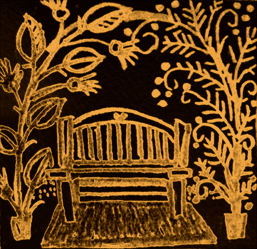So fall is upon us. Just like spring, it’s time to think about planting! So what do you consider? First, there’s mulch and feeding the soil. Second it’s planning what to plant – and that means rotating crops.
Mulching
Mulch, mulch, mulch. That means don’t till. Do you know what happens when you turn over the soil? You destroy this whole civilization of micro-organisms that are just waiting to help your plants grow! Can’t you hear the screams?
Okay….maybe I’m exaggerating a bit, but there is a whole world of life in the soil ecosystem. It starts with mycorrhizal fungi that form the base of the pyramid. These little folks send out microscopic hairs, called hyphae that go through the soil and grab minerals and nutrients and bring them to plant roots.
What happens when you till or turn over the ground? Those miles and miles (yes – in a small space!) of hyphae are broken and have to re-grow. Which takes time that they could otherwise be feeding your plants.
Instead, add organic material on top of the ground – like leaves, or compost, or mulch. That way, you’re giving the bacteria (who also live below-ground) something to munch on and add to the fertility of the soil – as well as its moisture tolerance.
Crop Rotation
Certain plants grow best when they are planted after another type of plant. For instance,
Legumes (think: beans and peas mostly) fix nitrogen from the air to the soil for leafy plants.
Leaf Plants (as in coles, leafy greens and corn) like lots of nitrogen. They grow best when planted after the legumes.
Fruits (as in tomatoes, eggplant, cucumbers, squash and melon) like phosphorus to set fruit, but too much nitrogen prevents them from setting the fruit. They just grow and grow and grow, but don’t set fruit.
Roots need even less nitrogen, but they need potassium. Roots include beets, carrots, turnips, radishes, garlic and potatoes.
Then cycle through again.
It’s also important to note that when you plant certain things in the same place year after year, they get covered with pests – like tomatoes get covered with hornworms. So never plant tomatoes in the same place year after year. Even if that is the best sunny spot.
So Rotate, Rotate, Rotate.
